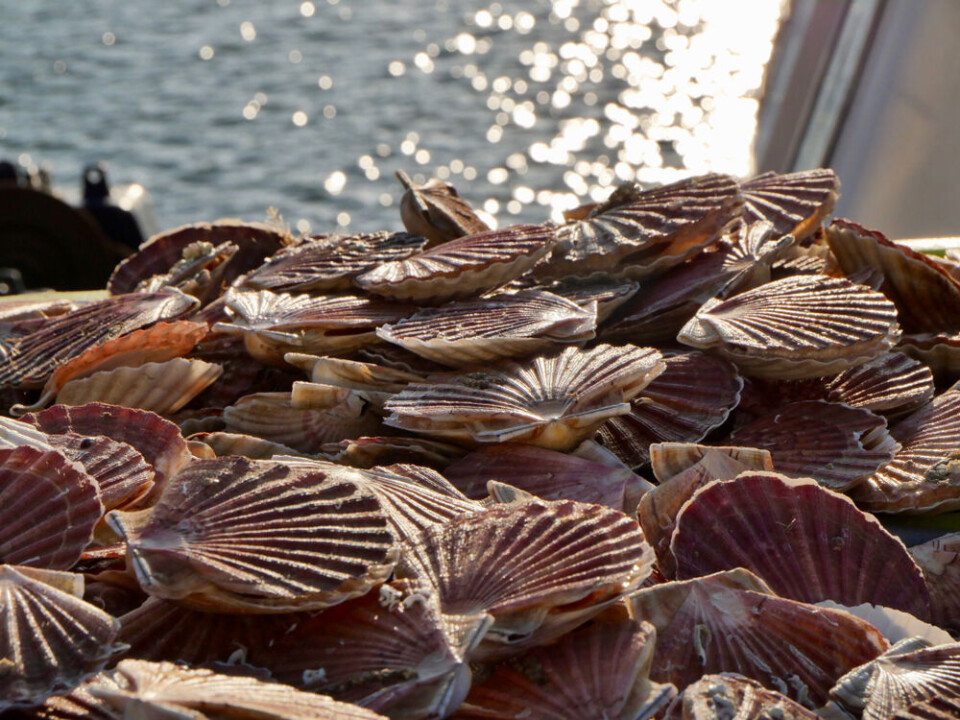-
Know your cheeses and their seasons: which to eat in France in February
Cow’s milk cheeses dominate as winter comes to an end
-
Films and series to watch in February to improve your French
Every month we outline good film and TV series to improve your language
-
Duck Cold! Four French phrases to use when it is freezing outside
France's current cold spell is set to continue for the next few days - we remind you of French expressions to use to describe the drop in temperature
Scallop season begins in Normandy: how to buy and cook them
October 2 saw the start of the scallop fishing season – here is how to get your hands on this emblematic coastal produce

Trawlers in Normandy can once again begin fishing for scallops, a flagship product of the region, as the season reopens. For the general public, the first shells are arriving on market stalls and fishmonger shelves now.
Normandy, on the north-west coast of France, is known for its impressive supply of scallops.
Known as coquilles Saint-Jacques in French, these delicious shellfish, traditionally served at Christmas, are not only a popular regional dish but also have a symbolic meaning in France.
One popular theory for them being called Saint-Jacques says that during the pilgrimages of Santiago de Compostela, walkers collected shells on the beaches of Galicia and carried them on their bags, hats or capes.
This was supposed to protect them from bad luck, while also being used to prove they completed their pilgrimage on return.
The fishing season opens
Fishing these shellfish is limited to certain months to preserve numbers, hence the significance of the season reopening (October 2) for local fishermen.
In Normandy, different fishing zones are opened successively throughout the season from the beginning of October to the end of May.
From Mont Saint-Michel to Tréport, around 300 boats fish for scallops – representing more than half of the sector’s annual turnover in the region.
One of the most popular zones with trawlers is the Bay of the Seine, considered the holy grail for shellfish.
Last year saw record numbers reached with 43,000 tonnes of scallops fished in France, including 30,000 in the Eastern Channel, and this year is looking promising once again.
However despite record numbers it’s still important to preserve the resource and scallop fishing is strictly regulated with limits on the number of fishing days and quantities caught.
Which scallops to buy
A quarter of the scallops on the French market come from Normandy, but how can you make sure you are buying these rather than those from elsewhere, often said to be of lower quality?
The sector has two Red Labels (Label Rouge) to differentiate Norman scallops from others – one for the scallop as a whole and one for the shelled scallop.
For shelled scallops to be awarded this label, they must meet strict guidelines including:
- Origin: fished in the Eastern Channel between end of November and mid-April
- Size: more than 11cm
- Freshness: sold no more than 48 hours after being caught
During the fishing season you should be able to find scallops at most markets and fishmongers.
One tip is to look out for the opening of fishing at the Bay of the Seine, as this signals an increase in the supply and a slight lowering in price.
Unsurprisingly, prices then tend to rise again with demand as Christmas approaches.
How to cook scallops
There are lots of ways to cook scallops, from baking them in the oven to flashing them in the frying pan or even just enjoying them raw.
If they are whole, the first thing is to remove their shells. To do this, take a knife and insert it into the back of the scallop.
Slide the blade along the shell to detach the scallop without cutting it in half. Pull off the frill and black stomach sack, keeping the white meat and coral.
Cooking scallops too long can affect both the taste and texture, so a quick flash in a hot pan for a minute or so on each side is plenty.
How to cook scallops is entirely up to you, the most important thing is to eat them as soon as possible to ensure they are fresh.
Read also
France’s Mont d’Or seasonal cheese is back
France recognised as a world-leader for caviar farms
























